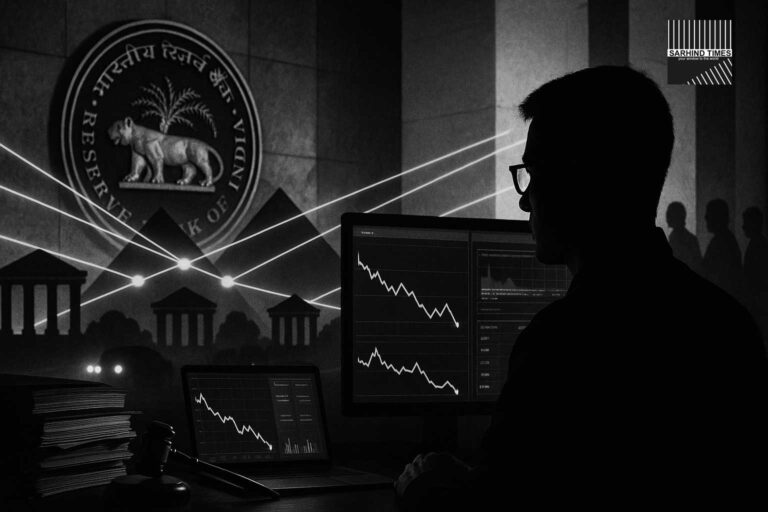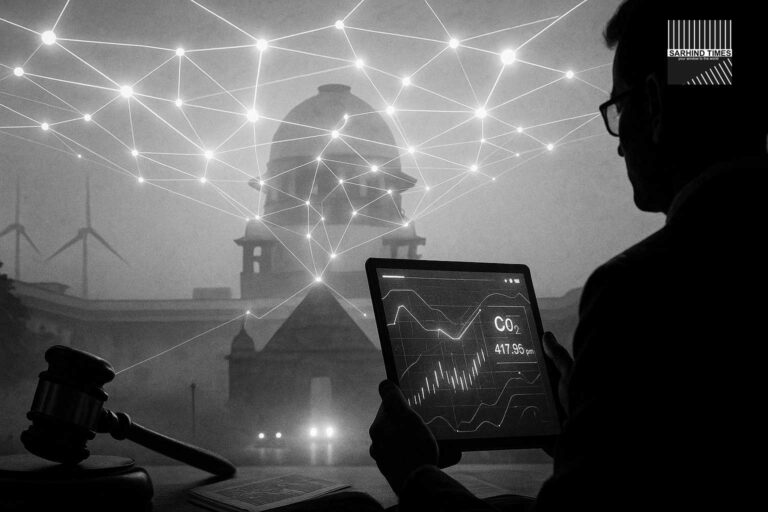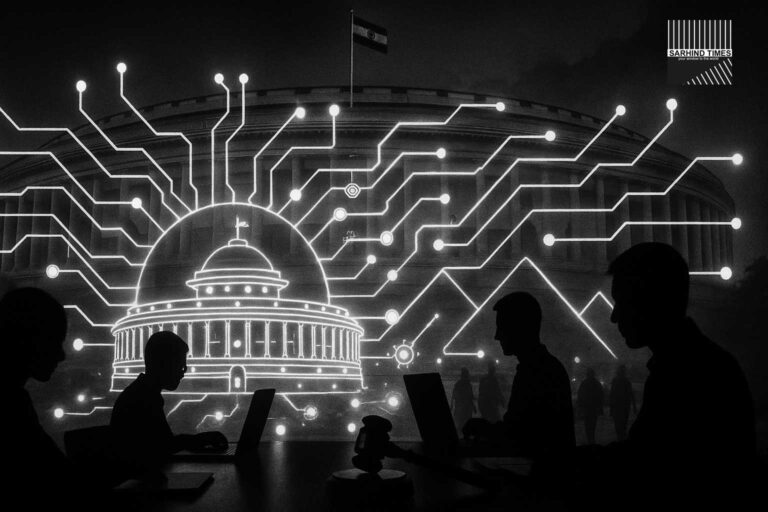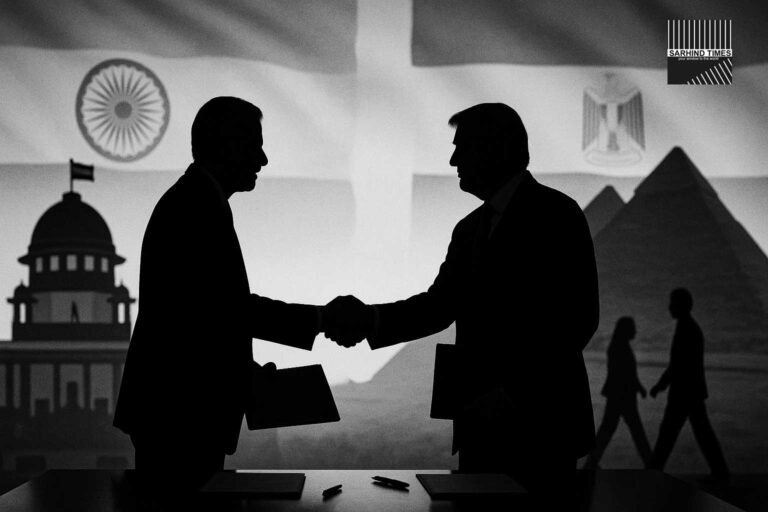In a major diplomatic milestone, India and Egypt have signed a comprehensive strategic cooperation pact covering renewable energy, defence collaboration, digital infrastructure, and trade facilitation, marking a new chapter in the two nations’ long-standing relationship. The agreement, signed in New Delhi, aims to expand joint investments, technology transfers, and maritime cooperation in the Indo–Middle Eastern corridor.
New Delhi, October 23 —
India and Egypt on Tuesday elevated their partnership to a Comprehensive Strategic Cooperation (CSC) framework, signalling a decisive expansion in their diplomatic, defence, and energy collaboration.
The pact was signed at Hyderabad House by External Affairs Minister Dr. S. Jaishankar and Egyptian Foreign Minister Sameh Shoukry, following a bilateral meeting between Prime Minister Narendra Modi and President Abdel Fattah El-Sisi.
“India and Egypt are not just partners — we are civilizational allies shaping the 21st century together,” Prime Minister Modi said during the joint address.
“From the Nile to the Ganges, our friendship runs deep, built on shared heritage and modern ambitions.”
1. Key Pillars of the Agreement
The new pact covers four primary domains:
- Renewable Energy Collaboration — particularly green hydrogen, solar parks, and wind corridors.
- Defence and Security — joint training, industrial co-production, and maritime security.
- Digital and Infrastructure Cooperation — focusing on fintech, 5G, and digital public infrastructure (DPI).
- Trade and Investment Facilitation — targeting a $12 billion bilateral trade volume by 2030.
Officials confirmed that both countries will establish a Joint Strategic Council to monitor implementation, meeting twice a year alternately in Cairo and New Delhi.
2. From Historical Ties to Modern Synergy
India and Egypt share over 75 years of diplomatic relations, dating back to their leadership in the Non-Aligned Movement (NAM) under Jawaharlal Nehru and Gamal Abdel Nasser.
However, the new partnership signals a shift from ideology to innovation, blending shared geopolitical interests with pragmatic cooperation.
“This is not nostalgia diplomacy — it’s the new non-alignment of growth,” said Dr. C. Raja Mohan, foreign policy expert.
“Both nations are redefining strategic autonomy for the digital age.”
3. The Renewable Energy Revolution
At the heart of the new pact lies the Green Hydrogen and Renewable Energy Partnership.
India’s Ministry of New and Renewable Energy (MNRE) and Egypt’s Suez Canal Economic Zone Authority have agreed to co-develop hydrogen production hubs, leveraging Egypt’s location and India’s technology.
- Adani Green Energy, NTPC Ltd, and ReNew Power will explore investments worth $3 billion in Egyptian wind farms and solar parks.
- Egypt, in turn, will partner with Indian Institute of Technology (IIT) Madras for hydrogen R&D exchange programs.
“India has innovation, Egypt has geography — together, we can power continents,” said Egyptian Minister of Electricity Mohamed Shaker.
Both countries aim to contribute jointly to the International Solar Alliance (ISA) for technology sharing and grid connectivity.
4. Defence Cooperation Expands
Defence ties between the two nations — traditionally focused on training — are being deepened to include:
- Joint military exercises in the Red Sea and Arabian Sea,
- Co-production of defence equipment, including drones and radar systems, and
- Information-sharing on counterterrorism and cyber defence.
The Indian Air Force and Egyptian Air Force have agreed to hold the first “Desert Soar” bilateral exercise next year.
Egypt has also expressed interest in purchasing LCA Tejas aircraft and BrahMos missiles, subject to regulatory approval.
“India’s defence production ecosystem aligns perfectly with Egypt’s modernisation goals,” said Defence Secretary Giridhar Aramane.
“This cooperation strengthens regional security while building industrial self-reliance.”
5. The Maritime Dimension
Strategically located at the junction of the Red Sea and the Mediterranean, Egypt plays a key role in maritime trade routes linking Asia, Africa, and Europe.
Under the new pact, India and Egypt will collaborate to enhance port digitisation, maritime surveillance, and anti-piracy patrols.
The Suez Canal Economic Zone will host an Indian logistics hub, supporting both civilian shipping and naval cooperation.
“The Indo–Egypt corridor is not just about goods — it’s about gateways to the future,” said Nitin Gadkari, Union Minister for Ports and Shipping.
6. Digital Infrastructure and Technology
In line with India’s Digital Public Infrastructure (DPI) export strategy, Egypt will adopt India Stack, a suite of open-source platforms including Aadhaar, UPI, and DigiLocker.
This collaboration will help Egypt modernise its financial inclusion ecosystem and public service delivery.
In return, Egypt will offer India access to its fintech sandbox for start-up exchanges and cross-border payments.
“This is data diplomacy,” said Rajeev Chandrasekhar, Minister of State for IT.
“We’re exporting trust architecture, not surveillance technology.”
7. Economic Expansion and Trade
Trade between India and Egypt reached $7.5 billion in FY24, but both governments are targeting a 60% increase by 2030.
Key sectors include:
- Pharmaceuticals and healthcare,
- Agriculture technology,
- Textiles and petrochemicals, and
- Infrastructure construction.
The two countries are finalising a Preferential Trade Agreement (PTA) to reduce tariffs and ease logistics via Direct Container Lines between Mumbai Port and Port Said.
“Our ambition is simple — from the Red Sea to the Indian Ocean, trade must flow faster than bureaucracy,” said Commerce Minister Piyush Goyal.
8. The Strategic Context
The timing of the partnership carries geopolitical weight.
As global supply chains diversify post-pandemic, Egypt is positioning itself as a gateway to Africa and Europe, while India strengthens ties with the Global South.
Analysts see this as part of India’s broader Indo–Middle East–Europe Corridor (IMEC) vision announced at the G20 Summit in New Delhi earlier this year.
“Egypt is India’s anchor in Africa,” said Ambassador Anil Wadhwa, former Secretary (East), MEA.
“Together, they complete the strategic triangle linking Asia, Africa, and Europe.”
9. Shared Concerns: Terrorism and Climate Change
Both leaders emphasised joint efforts against terrorism, extremism, and illicit financing, alongside cooperation on climate resilience.
Egypt, which hosted COP27, will partner with India’s National Institute of Solar Energy to develop adaptation models for desert agriculture.
“Security and sustainability are two sides of the same coin,” President El-Sisi said.
“Peace will thrive only when prosperity is shared.”
10. Voices from Business and Academia
Indian business chambers hailed the pact as a “historic opportunity”.
FICCI and CII announced upcoming trade delegations to Cairo, focusing on renewable energy, automotive parts, and textiles.
“This is India’s moment to invest in Africa via Egypt,” said Sanjiv Mehta, former CEO of Hindustan Unilever and head of the India–Egypt Business Council.
Academics echoed the optimism, noting that the partnership will deepen south-south scientific cooperation.
Cairo University and IIT Delhi have signed an MoU for joint research in climate-smart agriculture.
11. Cultural and Educational Links
The agreement also includes provisions for:
- Student exchange programs between Indian and Egyptian universities,
- Joint archaeological projects in Luxor and Varanasi, and
- Restoration of Indo-Islamic heritage sites under UNESCO frameworks.
“Our civilizations once traded through ideas — now we trade through innovation,” said Dr. Sameh Shoukry, Egypt’s Foreign Minister.
The Cairo Indian Cultural Centre will host a year-long “India@75–Egypt@75” festival to celebrate shared traditions.
12. Defence Industrial Cooperation
India’s Defence Research and Development Organisation (DRDO) and Egypt’s Arab Organization for Industrialization (AOI) will co-develop unmanned aerial systems, armoured vehicles, and electronic warfare modules.
Both sides will also explore joint manufacturing under Make-in-India and Make-in-Egypt programs.
“We are not arms importers anymore — we are partners in production,” said Dr. Samir Farag, Egypt’s retired military strategist.
13. Financial and Banking Integration
The Reserve Bank of India and Central Bank of Egypt are finalising a rupee–pound settlement mechanism, enabling direct trade without dollar dependency.
This move aims to ease liquidity stress and encourage MSME-level exports.
Indian banks like State Bank of India and Bank of Baroda are expected to expand operations in Cairo and Alexandria.
14. Women and Youth Empowerment
The pact introduces a “Youth and Innovation Fellowship” offering 100 annual scholarships for Egyptian students in Indian tech universities.
Additionally, both countries will collaborate on women-led entrepreneurship programs under India’s Nari Shakti initiative.
“Empowering women is the cornerstone of sustainable diplomacy,” said Smriti Irani, Union Minister for Women and Child Development.
15. Expert Analysis: Strategic Autonomy 2.0
Analysts interpret the India–Egypt partnership as a new model of south–south cooperation — one not dictated by Western or Chinese frameworks.
“This is strategic autonomy with digital roots,” said Dr. Happymon Jacob, international relations professor at JNU.
“It’s a sign that emerging powers can align on technology and trust.”
16. The Road Ahead
Implementation will determine success.
A Joint Action Plan (JAP) has been drafted with a six-month review mechanism and a dashboard tracking 50 measurable outcomes — from power capacity to trade volumes.
Both nations have also agreed to co-host the “India–Africa Future Summit 2026” in Cairo.
17. Global Reactions
The pact drew positive reactions worldwide.
The United Nations Environment Programme (UNEP) praised the renewable energy goals, while the African Union hailed it as “a bridge between Asia and Africa.”
China’s state media described the move as “a pragmatic alignment beyond old blocs,” reflecting a rare note of acknowledgment.
18. Symbolism and Diplomacy
Observers noted the careful choreography of the event — Indian and Egyptian flags standing side by side, saffron and crimson lights illuminating Hyderabad House, and a shared handshake that symbolised two civilisations reconnecting for a sustainable century.
“It wasn’t just diplomacy — it was heritage in motion,” remarked Suhasini Haidar, senior journalist.
19. The Numbers Tell the Story
- Bilateral trade (2024): $7.5 billion
- Target (2030): $12 billion
- New joint ventures: 27 in progress
- Renewable energy projects: 9 under implementation
- Defence deals under study: 3 major agreements
If executed, these projects could generate 45,000 direct jobs across India and Egypt.
20. Conclusion: The River and the Desert
From the banks of the Ganges to the sands of the Sahara, India and Egypt are reimagining old ties for a new world.
The partnership isn’t merely transactional — it’s transformational, built on mutual respect and shared ambition.
“History brought us together through trade; the future will unite us through technology,” Prime Minister Modi concluded.
The pact, analysts say, is more than diplomacy — it’s destiny written in two ancient scripts that have finally found a common language: progress.
#IndiaEgypt #StrategicPartnership #RenewableEnergy #DefenceCooperation #Trade #Diplomacy #SarhindTimes





















+ There are no comments
Add yours